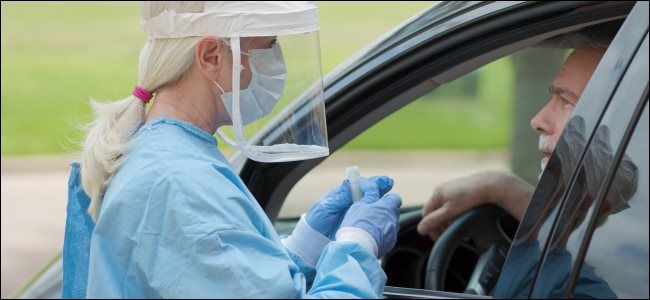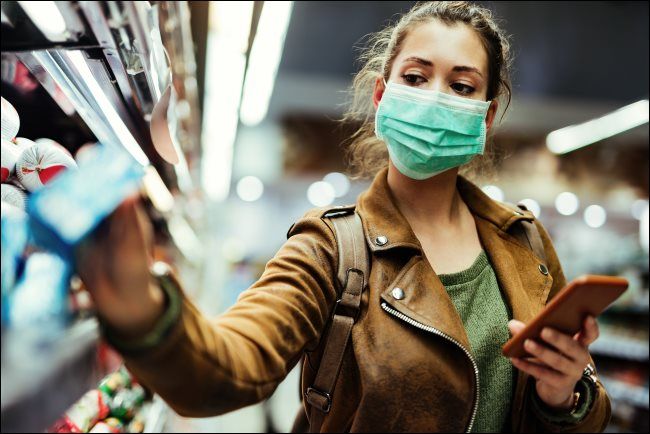Quick Links
During the middle ages, the doors of households suffering from the Black Death were marked with a red cross. It served as a warning: Do not enter, or ye shall suffer the fate of everyone inside.
What medieval doctors couldn't do, however, was map out an infected person's contacts to predict who else would catch the disease. They couldn't proactively isolate these people to prevent the spread of the infection.
That, in a nutshell, is the art of contact tracing. It's a formidable tool that might help conquer the novel coronavirus pandemic. Apple and Google are adding digital contact-tracing tools to the iPhone and Android to help.
How Contact Tracing Works
Over the last few decades, contact tracing has become a common technique to manage infectious diseases.
"Contact tracing is done for infections that exhibit both significant health risks and a high degree of infectiousness," said Daniel Piekarz Sr., vice president of life sciences and healthcare at DataArt. "Contact tracing has been used for many deadly diseases, like HIV/AIDS, SARS, tuberculosis, Ebola, measles, smallpox, and many others."
Public health authorities at both the state and local levels typically perform contact tracing. Trained staff---often led by epidemiologists---manage the effort, although the process is relatively straightforward.
If someone is diagnosed with a communicable disease, his or her primary care physician sends a report to the health authorities carrying out the tracing. A caseworker (contact tracer) then interviews the patient to determine where he's been and everyone with whom he's come in contact. The caseworker then contacts the people he might have infected and repeats the process.
What Contact Tracing Means for C-19
During the current coronavirus pandemic, a contact tracer will usually contact an individual who has tested positive for COVID-19 by phone. The tracer then works with that person to identify all individuals with whom he or she might have come in contact.
"The tracer calls each individual to inform them of their contact status, what it means, and actions to follow," said Jerry Wilmink, chief business officer at CarePredict. "Generally, to self-quarantine for COVID-19's 14-day incubation period and watch for symptoms."
In the final step, the tracer makes follow-up calls to all contacts to monitor symptoms and test for signs of infection.
Who are these contact tracers, though?
"Anyone can be trained to be a contact tracer," said Wilmink. "In fact, there are calls for hundreds of thousands of contact tracers to get COVID-19 under control. But it’s not a specialty per se. Basic analytic skills, empathy, and understanding of disease transmission and quarantine are helpful for this job, but all you really need is a high school diploma or equivalent."
It's easy to see how contact tracing makes intuitive sense. If we can determine the path of the disease, we stand a better chance of isolating those who might be infected and stopping it from spreading. It's a more tactical version of sheltering-at-home and a valuable weapon to slow the disease without quarantining the entire population.
When the economy restarts, some leaders, like New York governor, Andrew Cuomo, have already indicated contact tracing will be an integral part of the process.
"With the help of an army of investigators, contact tracing needs to be done to help limit the virus spread," Cuomo said.
Manual Contact Tracing Has Problems
Unfortunately, contact tracing is imprecise and far from completely effective.
For starters, it's a manual process that relies on an interview process. Memories are fallible, and there's no assurance an infected individual will be able to recall all the people with whom she's been in contact. That's not even including incidental contact with strangers, which will be impossible to fully catalog.
Staffing is also a serious concern. As the number of patients climb, there aren't enough investigators to thoroughly trace contacts. This why most U.S. cities abandoned contact tracing early on.
As the number of cases starts to fall, though, manual contact tracing will become viable again. It will be an important part of efforts to carefully ease stay-at-home orders.
Digital Contact Tracing
This isn't the AIDS pandemic of the 1980s, or even the SARs pandemic of the early '00s. According to Pew Research, more than 80 percent of Americans have smartphones. These can be used for contact tracing.
On April 10, Apple and Google announced plans to integrate contact tracing technology in their respective smartphones via Bluetooth Low Energy (BLE). Due to privacy concerns, this would require people to opt-in. For those who do, their phones will be able to identify other phones within proximity to them via BLE.
"The scale and nature of the coronavirus pandemic makes digital tracing appealing, especially since the coronavirus spreads quickly and asymptomatically," Wilmink said.
If someone uses an approved contact-tracing app to flag himself as infected, that information can then be used to track with whom he comes in close proximity without having to manually log that information. The data would be uploaded to health officials automatically, allowing them to reach out to those who've had even incidental contact with an infected person.
Digital contact tracing is a big step forward, however, it's not foolproof. Again, the technology requires people to opt-in and be diligent about indicating they're infected in the app.
"False positives are likely," said Piekarz. "What if you were standing next to a restaurant window, close enough for the contact tracing app to detect the cell phones inside the restaurant? And what is the probability of getting infected by someone who was six feet away from you for two minutes?"
Shortcomings notwithstanding, Apple and Google expect to make this technology available in May. How successful it will be, of course, depends on the opt-in rate. Still, it's potentially a major step forward in tracking the virus and knowing who might have been exposed.
In the meantime, there are other tools already in action. CarePredict, for example, is one of several healthcare companies that has already developed or deployed similar tools on a more limited basis. CarePredict's software is an automated contact-tracing system for senior care facilities.
"Once a suspected carrier has been identified," Wilmink explained, "CarePredict’s location-tracking capabilities allow facilities to know all of the individuals the infected person had contact with and the duration of the contact."
Armed with tools like these, contact tracing is stepping into the 21st century. In the coming months, it should help save lives and flatten the curve.



